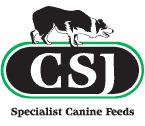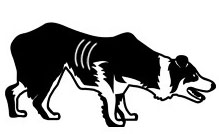Experience shows us that just like humans, feeding quantities vary from dog to dog. It’s all to do with metabolism, health, age, energy and activity levels. That’s why we recommend a Body Condition Scoring Chart to work how out much you should feed your dog.
Remember
It’s about what your dog needs as well as what your dog likes.
- Two half meals per day are better than one
- Always have a supply of fresh, clean water
- As fit as the food your dog eats
Just like humans, individual dogs use nutrients and energy in food differently. Remember it all depends on metabolism, health, age, energy and activity levels.
Feed for life
Be careful that if you feed more than your dog’s body needs, these extra calories can be stored as fat and can lead to obesity.
It’s a legal requirement for us to show you a Rough Feeding Guide based on weight, so we've provided one. But we have to let you know that this doesn’t tie in with the heart and soul of CSJ.
Your dog is as fit as the food it eats
Just like humans, individual dogs use nutrients and energy in food differently. Remember it all depends on metabolism, health, age, energy and activity levels.
Kick it and you’ve won!
Be aware of the risk of loose stools. We aim for ‘kickable’ stools! This indicates the food completely suits your dog’s digestion.
Get Advice from our Nutritionist




